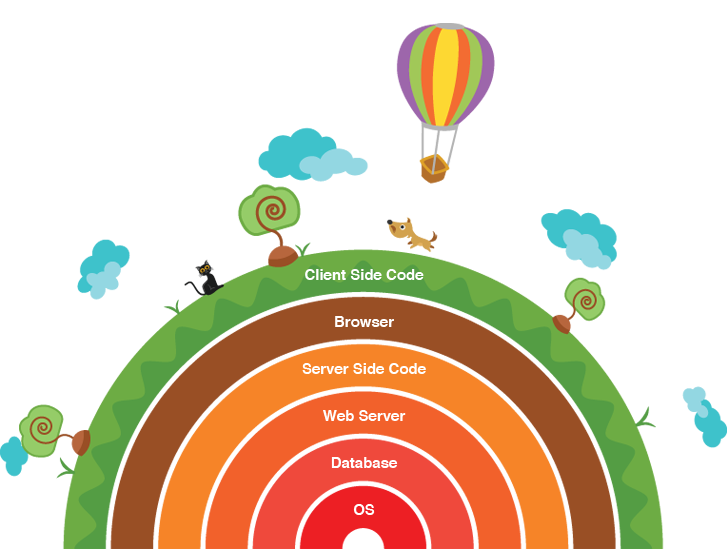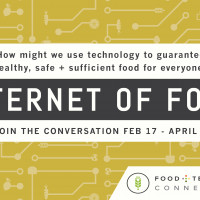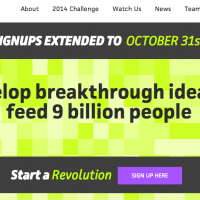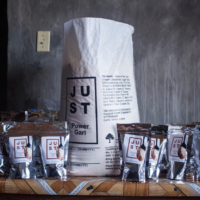Developing a food production and delivery infrastructure that can meet the needs of a growing and changing world will be one of the greatest challenges of all time. We’ll need fundamental upheavals in multiple billion-dollar industries to craft solutions. We’re also in a tech bubble with a growing belief that entrepreneurs can and should disrupt everything.
Yet I’m skeptical that “Move Fast and Break Things” will fix our food supply. We’ve been moving fast and breaking things in agriculture for decades. Things are broken.This is not a luddite’s polemic. We can no more remove technology from food production and distribution than we can remove nitrogen. Nor is there an agrinomical Eden to return to. Beating our combines into hand tools won’t solve our problems. We have to create the future we want to share.
In his brilliant work The Third Plate, Dan Barber documents experiments being conducted across the world in agriculture, aquaculture, restaurants, and more. Barber is a realist, noting that nothing he visits has the ability to scale. Even more importantly, Barber notes how often multiple generations of progress is undone by a few short-sighted decisions. Indeed, the book concludes with the depressing note that “it won’t last” will always be true in the absence of a permanent change in food culture.
This is the most important question to me. How then can we best use technology to develop the types of permanent changes to our ways of thinking that can enable lasting change in food production, distribution and consumption?
Tech does actually provide an answer to this – it’s just not what many imagine. There has been an incredible multigenerational effort to create a permanent culture around the development of the Internet. The underlying protocols and infrastructural elements that enable most modern web technology grew out of this culture.
These connective tissues were developed at research institutions starting in the 60s and 70s, were developed openly and were the subject of fierce debates and ongoing scrutiny. Equally important, this work has persevered because people continue to contribute to a free and open Internet.
This is a largely untold story. Generally, the only time the press discusses the inner workings of the web is when flaws are discovered, like Heartbleed. Major movie studios love making films about Steve Jobs and Mark Zuckerberg. Nobody ever makes movies about the transport layer.
Design and new business models can do a lot of short-term good – but they tend to focus on the application layer. Most founders and VCs focus on short-term traction and rapid growth. People love talking about the latest apps. Few talk about lasting infrastructure. People also love to talk about the latest restaurants. Few love to talk about micronutrients.
There’s an obvious analogy for the full stack: the food chain all the way down to the lowest level. We see this in The Third Plate – land grant universities creating a culture of experimentation and interchange around seeds. Fisherman and chefs working together on phytoplankton consumption.
This work is less sexy than 3D-printing and drones – but these are the connective tissues that support everything. We also need a culture that sustains this work.
We’ve done it recently – we can do it again.
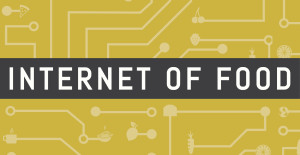 Internet of Food is editorial series exploring how we might use technology, new business models and design to guarantee healthy, safe and sufficient food for everyone. Join the conversation between February 17 and April 2. Share your ideas in the comments, on Twitter using#internetoffood, Facebook or LinkedIn.
Internet of Food is editorial series exploring how we might use technology, new business models and design to guarantee healthy, safe and sufficient food for everyone. Join the conversation between February 17 and April 2. Share your ideas in the comments, on Twitter using#internetoffood, Facebook or LinkedIn.
________________
 Mark is the Co-Founder of Cover. Cover is the leading mobile payment system for restaurants and works with over 100 restaurants to provide the best possible experiences for diners. Prior to founding Cover, Mark was a mobile payments lead for the federal government, working for Elizabeth Warren at the Consumer Financial Protection Bureau. He’s a graduate of Carnegie Mellon and Harvard Law School.
Mark is the Co-Founder of Cover. Cover is the leading mobile payment system for restaurants and works with over 100 restaurants to provide the best possible experiences for diners. Prior to founding Cover, Mark was a mobile payments lead for the federal government, working for Elizabeth Warren at the Consumer Financial Protection Bureau. He’s a graduate of Carnegie Mellon and Harvard Law School.

